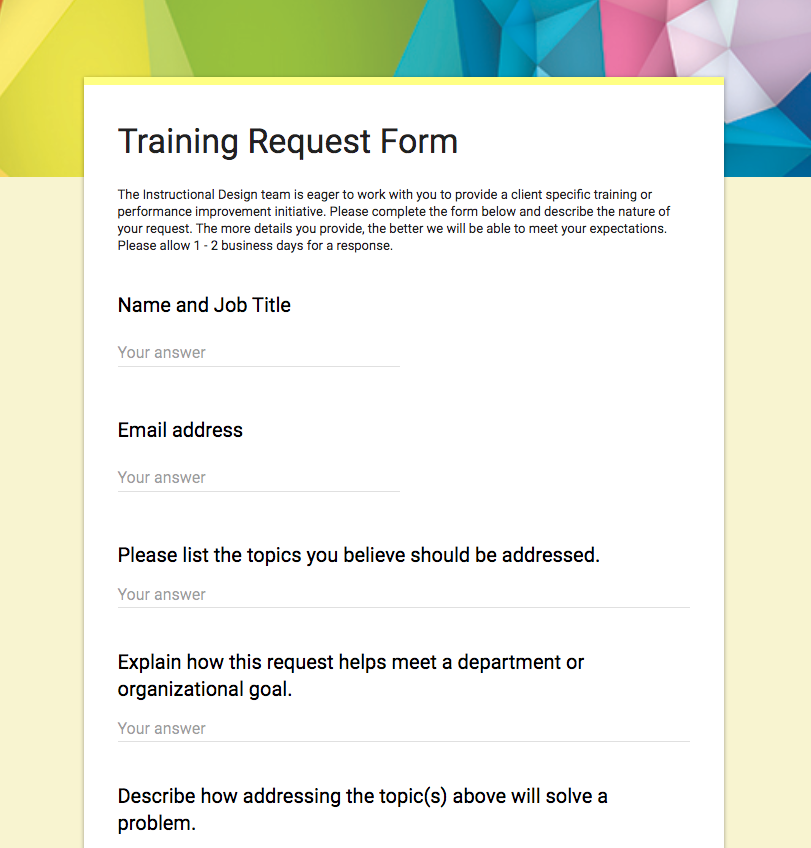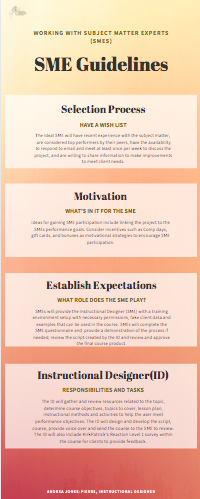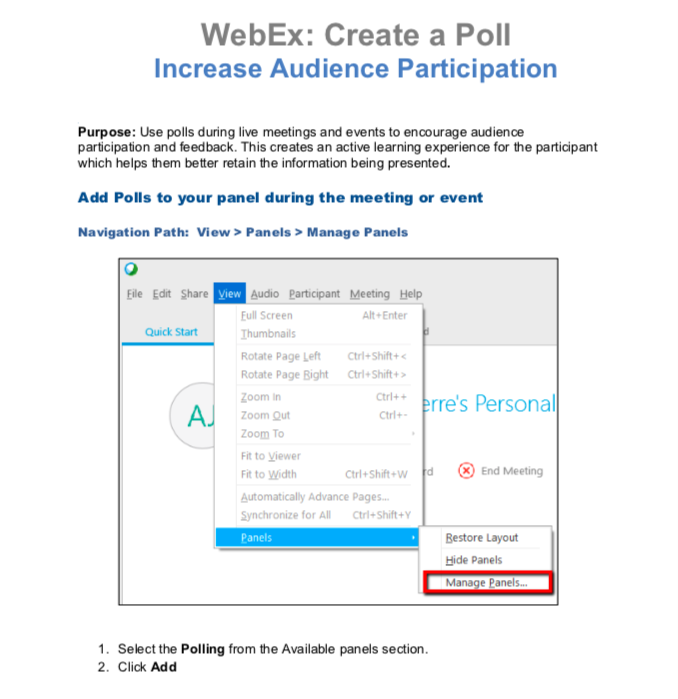Training Request Form
Background:
My team often receives training requests from stakeholders without fully clarifying the objectives or performance goals.
Problem:
A SME is assigned to the project with no background on why the topic is important.
Solution:
Fill the communication gap by creating a Training Request form to help understand the stakeholder’s request. Using information from the Association of Talent Development’s CPLP certification guidelines, I created a training request form to obtain background information from stakeholder to clarify their request, goals, target audience, business needs and objectives. My team introduced this form to leadership and it was accepted as part of our new process for prioritizing projects. The form helped to clarify goals and expectations which made the beginning stages of Analysis progress at an efficient rate.
Instructional Design Approval Process
Background:
At the time of my hire I was the only Instructional Designer for the company. The position was fairly new to the company so a training department with operating standards did not exist.
Problem:
During my orientation I was able to see the gaps in documentation when it came to Instructional Design policies and procedures for handling requests for training, working with SMEs, and reviewing and approving courses before go live dates. The lack of policies in place also affects new hire orientation and the speed at which one can acclimate to the job.
Solution:
I saw this as an opportunity to use my skills to create processes that would improve the collaboration efforts amongst the team, and make it easier for new Instructional Designers hired after to me to assimilate to the job quickly. This process among others was approved and later became a resource when two Instructional Designers joined the team.
Subject Matter Expert(SME) Guidelines
Background:
Collaborating with Subject Matter Experts is a major part of my job. When I first started my position I looked for existing policies to understand how to interact with SMEs in order to update and create new courses.
Problem:
I consulted with my leadership team and discovered that there were unofficial guidelines. Leadership wanted to go in a new direction when it came to defining the role of the SME during the instructional design process.
Solution:
I determined the goals leadership had for SME expectations and aligned them as closely as possible with industry stand Learning and Development recommendations and created new SME guidelines that addressed:
- Who is responsible for selecting SMEs (team leads, managers, etc)
- Desired criteria for selection such as recent experience with the subject
- Defined the role of the SME and the ID
- Added SME participation to performance goals to enhance motivation
This solution has beens successful so far because whenever a new SME is hired they are introduced to the SME Guidelines, SME questionnaire and the Instructional Design process during their orientation, to ensure that expectations are clear for both parties. The documents are re-introduced once the SME is selecting to work on a project for the first time.
SME Questions
Background:
One of my first assignments was to update the existing eLearning courses that were typically 30 to 90 minutes in length. Our clients were busy providing long-term care to residents and did not have that amount of time available to view a course. Their chief complaint was that the courses were too long. The clients needed courses that were 10 minutes or less that showed them how to use the software in order to deliver care to the residents.
Problem:
As I began to collaborate with SMEs on topics, a common issue was that the SME wanted to include a lot of topics that they believed were important, which would result in a course longer than 10 minutes. The goal was to focus on the "need to know" topics to reduce the time spent viewing videos.
Solution:
I created the SME questionnaire to help them focus on specific topics that needed to be included in the course, measurable learning objectives and assured them that another course could be created for modules that they felt are important to the end user’s learning experience.
These questionnaires tend to work best when discussed in person or via web meeting because it gives the ID an opportunity to get the relevant information and provide further explanation about what is considered a measurable objective.
was
Recording Tips
Background:
Editing recorded webinars and videos created by SMEs is another task I was responsible for. Once editing is completed, the webinar is uploaded to the website for clients to access on demand.
Problem:
Audio quality and recording quality needed help. I discovered that some SMEs did not have headsets and used speaker phones, which resulted in distracting background noise captured during the recording. Sometimes email and voice chats would pop up on the screen during the webinar which caused distractions. Webinars were recorded in noisy areas where you could hear other people talking in the background.
Solution:
I discussed the audio and screen issues with leadership and provided examples of the audio along with a list of recommendations that would enable us to provide professional audio quality content to our clients:
- Using headsets instead of speaker phone
- Finding a quiet room, away from the air conditioner and other people
- Closing all email and messaging applications to avoid distractions and longer editing time.
The tips in this document helped to reduce the amount of editing time needed to complete a video and make it available to our clients. It also saved time because SMEs did not have to re-do recordings due to poor audio quality if they followed these tips.
Job Aid
Background:
Webinars are conducted by SMEs and typically last an hour or more with minimal interaction from the audience except at the end of the presentation if there is time left over for questions.
Problem:
Length of the webinars are too long and little to no interaction with clients does not help with the retention of information.
Solution:
Since we were already using WebEx to present the webinars live, I created a document to show SMEs how to engage users more by using the Polling feature to ask questions at the beginning of the session and throughout the presentation to get immediate feedback on new features being introduced and utilization of certain features which could help the presenter change the direction of the presentation if necessary.
Combing the polls with the pracice of reducing the webinar time from 1 hour to 30 minutes resulted in more positive feedback and attendance from our clients.





